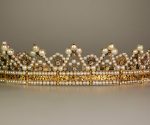White House Symposium Addresses STEM Education at An Early Age
Federal officials spoke of the importance of STEM education at an early age, especially for girls, at a White House Symposium on Early STEM in which they introduced a number of new initiatives, grants, and partnerships.
Entrepreneurs, researchers, and educators all came together for the symposium in an effort to determine the best ways to introduce science, technology, engineering, and math (STEM) to young children whose brains are still developing.
“This work on early STEM experiences is not just about ensuring a strong academic foundation,” Education Secretary John King said at the event. “It’s about the joy that comes in learning about and coming to understand how the world works.”
A variety of organizations are currently working to create STEM curricula and introduce outreach and educational programs, including Nickelodeon, the Bay Area Discovery Museum in Sausalito, the Early Math Collaborative at the Erikson Institute in Chicago, Girl Scouts of the USA and the Jim Henson Company, writes Yizhu Wang for EdScoop.
NASA has also partnered with the Department of Agriculture in the hopes of creating modules for students to learn about astronaut training.
Debbie Sterling, founder of GoldieBlox, a company that creates toys to peak young girls’ interest in engineering skills, said parents are the ones that truly influence the interest of their children in such topics.
“It’s funny, I think of my mom,” she said. “When I told her I was going to major in engineering, she said, ‘Why?’ These are subtle messages that you hear from your role models early on that start to make it less and less accessible to you.”
She went on to say that girls typically show just as much interest in playing with construction toys and video games as boys do. Sterling said that when watching children play with construction toys, the boys tended to build tall towers and then smash them against a wall, while the girls would put something together and create a story around it. “They’d want to know who the characters were and what the point is – are we fixing something or solving a problem?”
Sterling said that although she was advised to focus on high school-aged children, the research pointed toward younger children. With gender identity beginning around age three or four, she believes this to be where the issues actually start because it is when children begin to decide what boys and girls should be doing, writes Greg Toppo for USA Today.
Researchers said that studying how the brains of infants and toddlers work is central to the issue. Doing so, they say, would allow educators to change educational curriculum in order to fully develop various portions of the brain.
“I think we all know that children in a very early period learn like sponges, but we can go beyond what our grandmothers know,” said Patricia Kuhl, a professor studying brain science at the University of Washington.
Guidance on the subject of technology in early learning is expected to be released by the Department of Education and Department of Health and Human Services later in the year.
Author information
The post White House Symposium Addresses STEM Education at An Early Age appeared first on Education News.









Comments are closed.